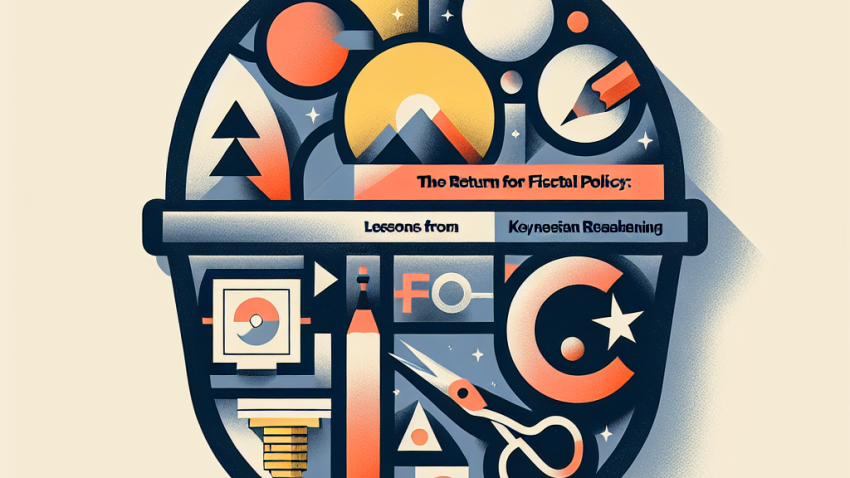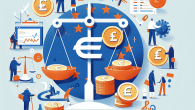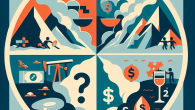
The Return of Fiscal Policy: Lessons from the Keynesian Reawakening
The Great Recalibration: How Global Markets Are Adapting to a Post-ZIRP World
In the grand theater of economic history, few policy shifts resonate with such reverberation as the end of the Zero Interest Rate Policy (ZIRP). From Tokyo to New York, and Frankfurt to São Paulo, central bankers are bidding farewell to their easy money days. The world is no longer awash in cheap capital. Instead, we find ourselves in what I call the “Great Recalibration” — a period of nuanced uncertainties, sharpened volatility, and, for the astute, unprecedented opportunities.
Allow me, Dr. Alistair P. Whitmore — economist, Oxford alumnus, and unapologetic aficionado of global financial systems — to serve as your intrepid guide through this new and rather prickly terrain.
The Twilight of ZIRP: A Dislodged Foundation
Since the 2008 Global Financial Crisis, the developed world has indulged in a near-zero interest rate experiment designed to support borrowing, stimulate investment, and revive consumer spending. ZIRP, for years, was the financial intravenous drip keeping economies artificially vigorous — while inflating asset values with the discretion of a helium balloon vendor at a very optimistic child’s birthday party.
That era is now officially over.
Why ZIRP Was Never Meant to Be Forever
While central banks like the Federal Reserve and the European Central Bank never explicitly declared zero-rate policies to be permanent, markets behaved as if they were. Investors piled into speculative tech stocks, unprofitable growth companies, and emerging-market debt with all the caution of a caffeine-drenched undergraduate during final exams.
But inflation — that age-old economic villain — gave policymakers a rude awakening. As prices soared post-pandemic and in the wake of geopolitical ruptures (yes, we’re looking at you, Russia-Ukraine conflict), central banks had no choice but to tighten the money taps.
The result? Interest rates were hiked at historic speeds. The US Federal Reserve has taken its benchmark rate from near-zero to over 5% in less than two years. The Bank of England followed. Even the once-stubborn Bank of Japan is beginning to stir from its ultra-loose slumber.
Market Impact: From Fantasy to Fundamentals
Global markets are now undergoing a seismic shift — akin to replacing the financial world’s blood type. What can investors, policymakers, and our humble dinner-party economists expect? Plenty.
1. Repricing of Risk
For over a decade, investors searched for yield in progressively riskier places, a phenomenon known as the “reach for yield.” In a low-rate environment, profitability mattered less than potential. Now, the wrecking ball of higher rates forces all assets to be re-evaluated under more stringent conditions:
- Bond markets: Yields have risen, leading to price drops. Long-dated bonds — particularly 30-year Treasurys — were among 2022’s worst-performing assets. Ouch.
- Equities: The days of growth-stock dominance are over. Investors are pivoting toward value-driven businesses with reliable cash flows.
- Real estate: Financing costs are up, valuations are down, and attractive cap rates are no longer guaranteed.
2. The Strengthening Dollar and Its Implications
Higher US rates have triggered capital flows back into dollar-denominated assets. As a result, the US Dollar Index (DXY) surged to levels not seen in decades. This poses particular problems for emerging markets:
- Debt repayments become more expensive for nations with dollar-denominated bonds.
- Currency depreciation fuels inflation in countries reliant on imports.
- Capital flight puts pressure on domestic financial stability.
We’re already seeing affected economies — such as Egypt, Turkey, and Argentina — take accelerated steps to stabilize currency regimes and negotiate financing lifelines via the IMF or multilateral partners.
Policy Responses: Central Banks Find a New Voice
Gone are the days when central bank meetings were snooze-inducing affairs for even the nerdiest market watchers. Now, Jay Powell’s utterances are parsed with the fervor of Vatican conclave smoke. While some institutions are cautiously optimistic, others remain adamantly hawkish despite slowing economic data.
The Federal Reserve (U.S.)
The Fed’s roadmap appears uncertain — the so-called “Powell pivot” may come eventually, but for now, maintaining restrictive policy to kill inflation remains the priority. Any dovish talk is balanced with strong reminders that inflation at 2% isn’t negotiable.
European Central Bank (ECB)
Europe faces a dilemma — avoid recession or crush inflation? With energy challenges and fiscal fragmentation, the ECB walks a tightrope. Yet it, too, has raised rates to curtail inflation, even at the risk of stifling weak peripheral economies.
Emerging Markets
Interestingly, many emerging markets raised interest rates far before the developed world did. Brazil and Mexico, for example, were early movers — a rare turn of the tables. This proactive posture gives them a buffer now, but risks of stagflation and unemployment remain on the radar.
Opportunities in the Rubble
But let us not despair — markets, like good British stoics, are resilient. The death of ZIRP opens up avenues for the disciplined:
- Bonds are back: For the first time in years, conservative investors can earn real yield from Treasurys and investment-grade bonds.
- Active management matters: Passive investing isn’t dead, but market dispersion favors active strategies that identify fundamentally undervalued assets.
- Global diversification: Countries with sound fiscal policies and accommodative demographics — think India or Indonesia — offer attractive long-term prospects.
- Commodities and gold: As inflation persists and geopolitical risk simmers, real assets are regaining their shine.
Looking Ahead: What’s Next in the Great Recalibration?
The macroeconomic future is anything but linear. Will inflation continue to cool? Will central banks overshoot and trigger recessionary spirals? Will geopolitical turmoil unsettle fragile supply chains once more?
To navigate this brave new world, investors and policymakers must embrace humility, agility, and rigorous analysis. Gone are the days where liquidity masked poor decisions. In the post-ZIRP economy, fundamentals — earnings, cash flow, debt sustainability — finally reign once again.
And friends, isn’t it time they did?
If you’d like to know more about who we are and our vision at Financeone, feel free to explore our About Us page. Have a burning question or macroeconomic theory to share? You can always Contact Us.
Until our next adventure into global markets and economic insight, I remain,
Dr. Alistair P. Whitmore
Senior Editor & Macroeconomic Strategist, Financeone









Leave a Reply